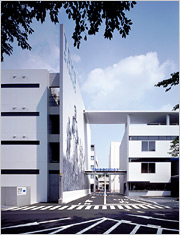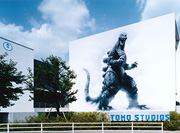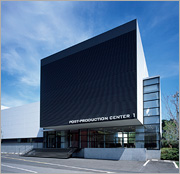


The history of TOHO STUDIOS goes back to 1932 with the founding of the Photo Chemical Laboratory (PCL). At that time, the film industry was in the midst of stepping out of the silent era and entering the world of sound. PCL had started out as a company specializing in developing new technologies for talking pictures. After a series of mergers between PCL and several other companies, TOHO emerged in 1943 and renamed their production facilities "TOHO STUDIOS," a name that remains to this day.
Since its opening, TOHO STUDIOS has provided stages equipped with the latest technology for sync sound recording. In March 1955, Stages 8 and 9 were completed and remain the largest sound stages in Japan today.
Since its early years, TOHO STUDIOS has given birth to many of Japan’s most representative films, from most of Akira Kurosawa’s works, including Seven Samurai, to giant monster films such as Godzilla from The Rickshaw Man (original title: Muhomatsu no Issho) by Hiroshi Inagaki to The Makioka Sisters (original title: Sasameyuki) by Kon Ichikawa.
TOHO STUDIOS began extensive renovations starting in 2004, and renewed a large portion of its grounds and buildings. Many facilities were upgraded during this time, including the installation of an optical fiber network to enhance the infrastructure within the studio.
The studio has now transformed into an ultra-modern production center with facilities to provide consistent support throughout filmmaking, from pre-production to post-production.